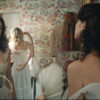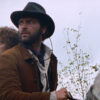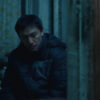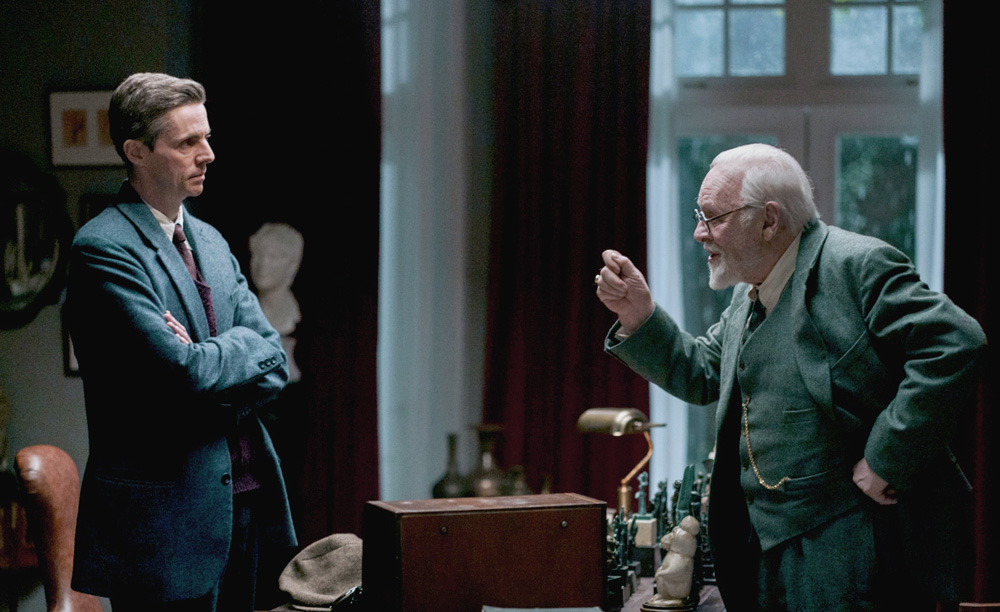“You sir are a walking contradiction,” C.S. Lewis (Matthew Goode) tells Sigmund Freud (Anthony Hopkins) well into “Freud’s Last Session,” equally bemused and frustrated by someone he believes needs no sparring partner to carry out an argument. Still, after writing “The Pilgrim’s Regress,” a thinly-veiled fictionalized account of his own embrace of Christianity following his experience of being conscripted to fight in the First World War (and long before he would achieve widespread notoriety with “The Chronicles of Narnia” series), Lewis finds himself in the legendary psychoanalyst’s office for a battle of wits nonetheless, invited to Freud’s home in London after he had to leave his native Austria for England with the rise of Nazism in the late 1930s.
No one can say for certain whether the meeting actually took place – Dr. Arman Nicholi took the documented visit of an unknown Oxford professor to Freud’s home shortly before his death in 1939 to create a thought exercise about the existence of God, using Lewis’ writing as arguments against Freud’s atheism and vice versa, and after being adapted into a hit play by Mark St. Germain, the truth in “Freud’s Last Session” comes from a debate that remains unresolved and at the root of so many sociopolitical conflicts and having two of the most convincing actors around in Goode and Hopkins to bat it around. In Matthew Brown’s follow-up to his 2015 drama “The Man Who Knew Infinity,” about the mathematician Srinivasa Ramanujan and his mentor G.H. Hardy, the director is able to once again able to find the passion amidst the intellectual pursuits of its characters, able to summon synapses firing at all cylinders as readily as Lewis and Freud can in going at one another.
It may take two to tango, but the film is enlivened by the conflict they each face internally as Lewis moves through the world constantly reminded of his brutal tour of duty in the military and Freud, a pioneer in analyzing dreams, doesn’t always have reality lining up with what he sees in his mind, occasionally getting lost in theoretical arguments unlikely to need a resolution while ignoring more pressing concerns such as expressing that he approves of his daughter Anna’s (Liv Lisa Fries) romance with a female associate (Jodi Balfour) while in heated exchanges with Lewis, he is adamant about his support for same-sex relationships. One may wish that “Freud’s Last Session” might not be as relevant as it is, particularly when its most potentially unrecognizable quality is the civil discourse between people who vehemently disagree with one another, but in the hands of Hopkins and Goode, it speaks to the moment and is primed to become a conversation starter all its own and recently, Brown graciously took the time to talk about the discussions it’s sparked within his own family, being able to draw on his star Hopkins’ many, many talents over the course of the production and bringing ideas out into the open as they live in the psyche.
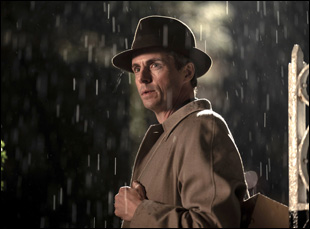
I just finished this other movie, “The Man Who Knew Infinity” that was pretty heady material as well and I had a producer I had worked with a few years earlier who got the script of this film to me, and it was really almost still a play at that point. It was a very early draft, and I read it and I said, “Alan, I don’t know if I can go back into this kind of material,” but it stuck with me. My father is a psychiatrist, so I knew a little bit about Freud and it was one of those things that just had a lot of the big themes in it that I’m attracted to investigating, so I tried to run away from it, but it just followed me.
You’re apparently too good at making the intellectual visual. Is that actually a challenge you’re attracted to?
When you try to make these kinds of films, they’re independent, so there’s not a lot of money and on [“The Man Who Knew Infinity”], there was particularly not a lot of money, so I had to give up a lot visually [because] we just didn’t have the schedule. With this one, I made a promise to myself, if I did get to make the film, I was going to make sure I had the ability to do some of the stuff visually that I didn’t get to do in the last one, so it was really important to me, and I felt like it made a difference because it really brought us into the inner sanctum of those characters, With the PTSD [C.S. Lewis experiences], if you didn’t see that and experience that with the actor, you’d only understand it in a heady kind of a way. I’ve got PTSD, but you don’t know that because you haven’t experienced what caused that. So to be able to have the freedom visually to be able to accomplish some of that was really fun. I did enjoy it and I had a great team around me, too. Ben Smithard, our cinematographer, Luciana Arrighi, our production designer, and Eimer [Ni Mhaoldohmnaigh], our costume designer, we’re just amazing. When you’re dealing with this low-budget situation, but have all those people that have your back and really want to also accomplish that, it’s possible. Anything can happen.
Is it true that Anthony Hopkins was pretty keen on pushing the dream sequences?
Yeah, he really wanted to go there with it because we didn’t know whether this meeting [between Freud and Lewis] actually happened or not. Who knows? I don’t want to speculate. But it gives you the freedom to say, “Let’s go into the dream aspect of it a bit more,” so we did. We had a few flashbacks that were more fantasy-related, and then we had some that were more contextualized, but I always wanted to add an element of the subconscious to them, whether it was the deer with C.S. Lewis or the fantasy sequence with Freud when he’s going through the Aether Dream, and I think they add an element to the storytelling. But Hopkins felt very strongly that was what we should do, so I had a partner in crime with that and it makes it a lot easier.
So you’ve got him and Matthew Goode, these two incredible actors, in this battle of wits, and when they’re giving their all, what’s it like getting that energy to come across from the set to the screen?
There were two parts of it. One part would be from having a father who was a psychiatrist. I remember going to my dad’s office as a young boy and visiting, and I always felt it was mysterious. The lights were low, and it had a [certain] look and a feel to it, and [cinematographer] Ben Smithard loved that, so we made that work over the course of a day [in film time], and he really lit it just beautifully.
But the other part of it was that Hopkins was really excited to do a lot of pre-blocking with this film, so when we got there, we had ideas for how there could be movement for almost every scene, whether it was going into the pantry or up the stairs and then leaving him up the stairs while we were downstairs. That was actually interesting, because both Tony and I had watched “Who’s Afraid of Virginia Woolf?” and I get a phone call from him the next day [to discuss a certain scene in “Freud’s Last Session”], and he’s like, “Stairwell!” [laughs] Which is great [for our film since] it leaves Lewis down there to think by himself for a moment. It’s finding creative ways to use the space so that it’s making you work as an audience member with your mind. We were doing seven pages a day at times, and that’s a lot of memorization [for the actors], so putting in some blocking ahead of time allows you as well as [Hopkins, specifically] to know his intentions in a way that I think helped with memorization as well, so you get two successes. You’re creating movement and you’re helping him stay in the moment more because he knows where he’s going with this. So I think it worked out.
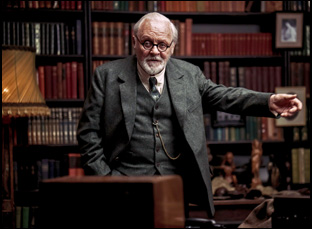
It was based on Freud’s real office in London, and the Freud Museum in London was incredibly helpful. We did 3-D imaging from the museum in order to recreate those statues on his desk and all those books and bookshelves. Luciana Arrighi, whose an Oscar-winning production designer, worked closely with the museum to do that and Luci fought really hard to make all that happen because we had quite a few budgetary restrictions that needed to be adhered to. I had to do an interview at the museum after the film, and I was like, “Oh, my God, it’s like walking back on set. It’s incredible.”
From what I understand, you did the office shoot before going outdoors and typically, I’d ask this of actors, but was it interesting having a sense memory of the central conversation of the film going into the filming of all the flashbacks or fantasy sequences?
It was sad to leave the stage. I’m not going to lie. We got into such a beautiful rhythm there, and it was so comfortable, and then all of a sudden you’re in the harsh reality that every single day you’re moving. It was so many moves over the course of a couple weeks and by the end of it, I was, [as they] say over there, “knackered,” I was just wiped out, thinking about it now even, so it was hard because you had the challenges [of the rigorous production], then you have to remember where you are in the story, and that’s your job, and making sure that it’s going to keep on. My big concern was [whether] we were going to be able to pull off the transitions between the scenes, and that was something that I had a whole approach on that seemed to work out pretty well in the end, but it was a little nerve-wracking [in the moment], to know that you shot [the scene this connects to] two weeks ago, and where are you emotionally in this [right now], and are you tracking it right? But we had really fabulous actors and department heads that were all really committed to this in a way that was extraordinary. Because of Hopkins, I think everyone puts on their A-game, and no one wanted to let him down, myself included.
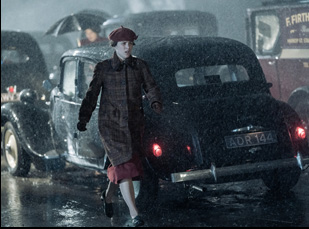
There definitely is. The music that drifts in over the courtyard through the windows – that’s all his piano music that he gave us. But what else happened was we were filming the scene between Anna and Dorothy where they hold hands at the end of the movie, and I was holding the shot for a very long time because I thought there could be the possibility that this was the final scene of the movie, and I wanted to just extend it to see where it went. Jodi Balfour [who plays Dorothy] was like, “What do you think about maybe we do a little playback music here to help with this whole thing?” And Tony’s like, “Well, I might have something,” and he walks over and he pulls out his iPhone and puts it on YouTube, and it’s this Vienna orchestra playing this waltz. It took me a minute to realize that it was his waltz – he had written it, and it was his music, so I’m watching this whole orchestra and we played that [along with our] playback for that scene. And then when the editor got to it later on, he was like, “You’re not going to believe this,” so he played [the music], and then he continued it on over the rest of the scenes the way we cut it, and the music was changing naturally in all the changes. I was like, “This is crazy.” So I [went back to Hopkins and said], “Tony, how do you feel about letting us use this piece of music for the film?” And he was just so generous and made the calls and got us the piece of music. It all happened just from that moment on set that day, and it carried on all the way through to now, and it’s Tony’s music. He’s also an amazing painter as well, so he’s a man of many talents.
When your father is a psychiatrist, and as I’ve heard, you might have some clergy in the family as well, could you battle test this within your own extended household along the way?
We could do that. [laughs] What I’ve taken away from the whole thing is that people are people, and we don’t give people the benefit of the doubt the way we should, and that they might actually be open to hearing opposing points of view and being okay with it and talking. Generally speaking, people are kinder than you actually would expect them to be, so I hope people take away from this film that maybe they can have conversations and not have to be afraid that somebody might disagree with them and that maybe they can agree to disagree. It’s enjoyable because you learn something when you do that. You learn where that person’s coming from, and all of a sudden that can open you up to things.
Actually, my now brother-in-law, who is a pastor, saw the movie and he loved it, and he said it’s great for us as Christians because we can be challenged about our faith and rethink it and learn something from that. Then my father’s a psychiatrist who comes from a very different point of view and a Jewish background, so we’re all Americans. We can all get along if we want to. The beauty of this, I thought, is that I feel like at the end of the movie, Freud and Lewis don’t really want the other person to go. You can feel that in them, and that’s what it’s all about. They don’t agree, but they can like each other.
“Freud’s Last Session” will open on December 22nd in Los Angeles and New York and expand thereafter. A full list of theaters and dates is here.
